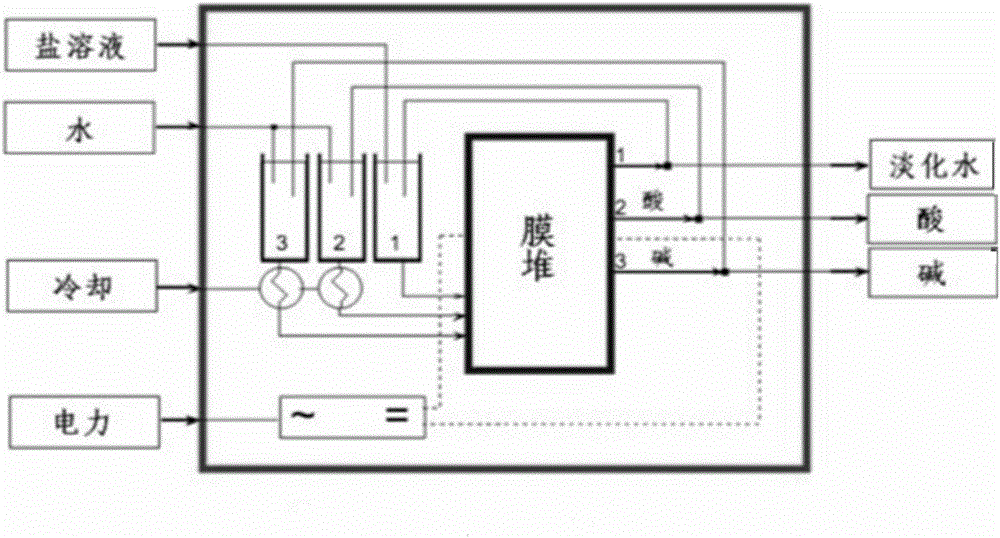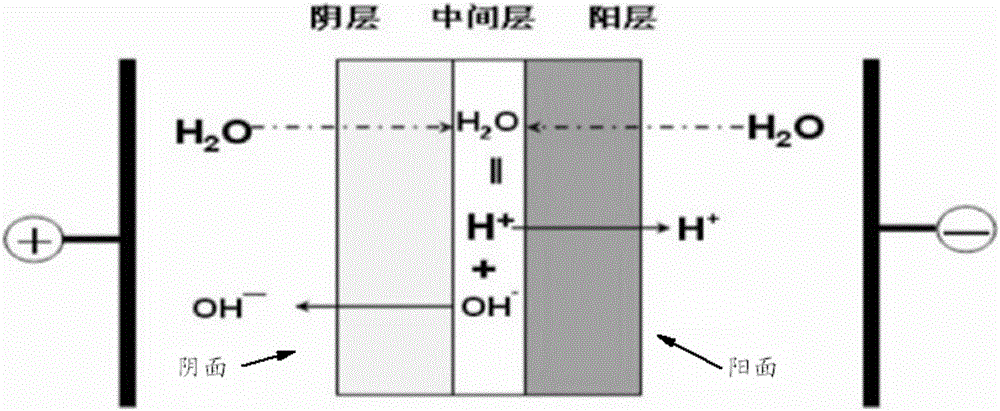Methods for preparing halogen propanol and ethylene oxide
A technology of propylene oxide and halopropanol, which is applied in the field of preparing propylene oxide, using a new halohydrin method to prepare propylene oxide, and preparing halopropanol, can solve the problems of addition side reactions, serious corrosion, waste of raw materials, etc. Achieve the effects of less steam consumption, lower biological oxygen content, and lighter load
- Summary
- Abstract
- Description
- Claims
- Application Information
AI Technical Summary
Problems solved by technology
Method used
Image
Examples
Embodiment 1
[0084] 1) Halohydrinization: Add 70wt% hydrogen peroxide H into a tubular reactor (where a fixed bed of ZSM-5 molecular sieve is filled in the tube) 2 O 2 , 35wt% concentration of HCl solution (hydrochloric acid) and propylene, chlorohydrin reaction at a temperature of 45 ℃, of which 70wt% concentration of hydrogen peroxide H 2 O 2 , 35wt% HCl solution and the flow rate of propylene should be such that H 2 O 2 The molar ratio of HCl to propylene is approximately 1.2:1.2:1. The halohydrin is obtained, that is, a mixture of 2-chloroprop-1-ol and 1-chloropropan-2-ol. Among them, ZSM-5 molecular sieve is prepared by referring to the method of Examples 1-3 in the patent 200510029462.7.
Embodiment 2
[0088] 1) Halohydrinization: ZSM-5 molecular sieve and 35wt% hydrogen peroxide H are added to the tower reactor 2 O 2 , 20wt% concentration of HCl solution (hydrochloric acid) and propylene, chlorohydrin reaction at a temperature of 35 ℃, wherein the mass ratio of ZSM-5 molecular sieve to propylene is 0.05:1, 35wt% concentration of hydrogen peroxide H 2 O 2 , 20wt% concentration of HCl solution and propylene should be added so that H 2 O 2 The molar ratio of HCl to propylene is about 1.5:1.1:1. The halohydrin is obtained, that is, a mixture of 2-chloroprop-1-ol and 1-chloropropan-2-ol. Among them, ZSM-5 molecular sieve is prepared by referring to the method of Examples 1-3 in the patent 200510029462.7.
Embodiment 3
[0096] 1) Halohydrinization: Add 70wt% hydrogen peroxide H into a tubular reactor (where a fixed bed of ZSM-5 molecular sieve is filled in the tube) 2 O 2 , 35wt% concentration of HCl solution (hydrochloric acid) and propylene, chlorohydrin reaction at a temperature of 45 ℃, of which 70wt% concentration of hydrogen peroxide H 2 O 2 , 35wt% HCl solution and the flow rate of propylene should be such that H 2 O 2 The molar ratio of HCl to propylene is approximately 1.2:1.2:1. The halohydrin is obtained, that is, a mixture of 2-chloroprop-1-ol and 1-chloropropan-2-ol. Among them, ZSM-5 molecular sieve is prepared by referring to the method of Examples 1-3 in the patent 200510029462.7.
[0097] 2) Saponification: the halohydrin obtained in step 1) is subjected to a saponification reaction with sodium hydroxide, and separated to obtain an organic phase of propylene oxide and a sodium chloride solution. The saponification reaction is carried out in a steel tower reactor, and the upper p...
PUM
 Login to View More
Login to View More Abstract
Description
Claims
Application Information
 Login to View More
Login to View More - R&D
- Intellectual Property
- Life Sciences
- Materials
- Tech Scout
- Unparalleled Data Quality
- Higher Quality Content
- 60% Fewer Hallucinations
Browse by: Latest US Patents, China's latest patents, Technical Efficacy Thesaurus, Application Domain, Technology Topic, Popular Technical Reports.
© 2025 PatSnap. All rights reserved.Legal|Privacy policy|Modern Slavery Act Transparency Statement|Sitemap|About US| Contact US: help@patsnap.com



